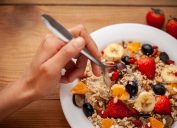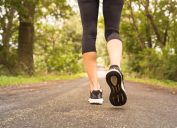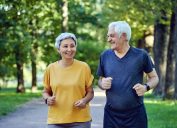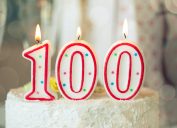63-Year-Old Longevity Doctor Reveals 7 Diet and Exercise Secrets to Stay Young
These small tweaks can add years to your life—and science backs it up.

Everyone wants a long lifespan, but nowadays, a long health span is just as covetable. Mark Hyman, MD, founder and senior advisor for the Cleveland Clinic Center for Functional Medicine and host of the popular podcast The Doctor's Farmacy, put it best in an interview with GQ: "Your health span is how many years of your life you're healthy, and your lifespan is how many years you're alive."
He says that many people suffer needlessly at the end of their lives and that if we pay attention to a few key facets of health, we could feel younger for longer.
"There's a famous study from James Fries from Stanford, where he looked at the habits of a large cohort of people," Hyman told the magazine, "and he found that those who kept their ideal body weight, didn't smoke, and exercised lived long healthy lives and died quickly, painlessly, and cheaply, whereas those who didn't follow those behaviors had sort of long, slow declines and died long, expensive, painful deaths."
Since Hyman has dedicated his career toward studying longevity—and has implemented many of his findings into his own daily routine—his followers turn to him for health and wellness tips. Read on for the 63-year-old doctor's best diet and exercise secrets for living your best life for the longest time possible.
RELATED: 116-Year-Old Woman With No Major Health Issues Reveals Her Longevity Diet.
1
Sip electrolytes.
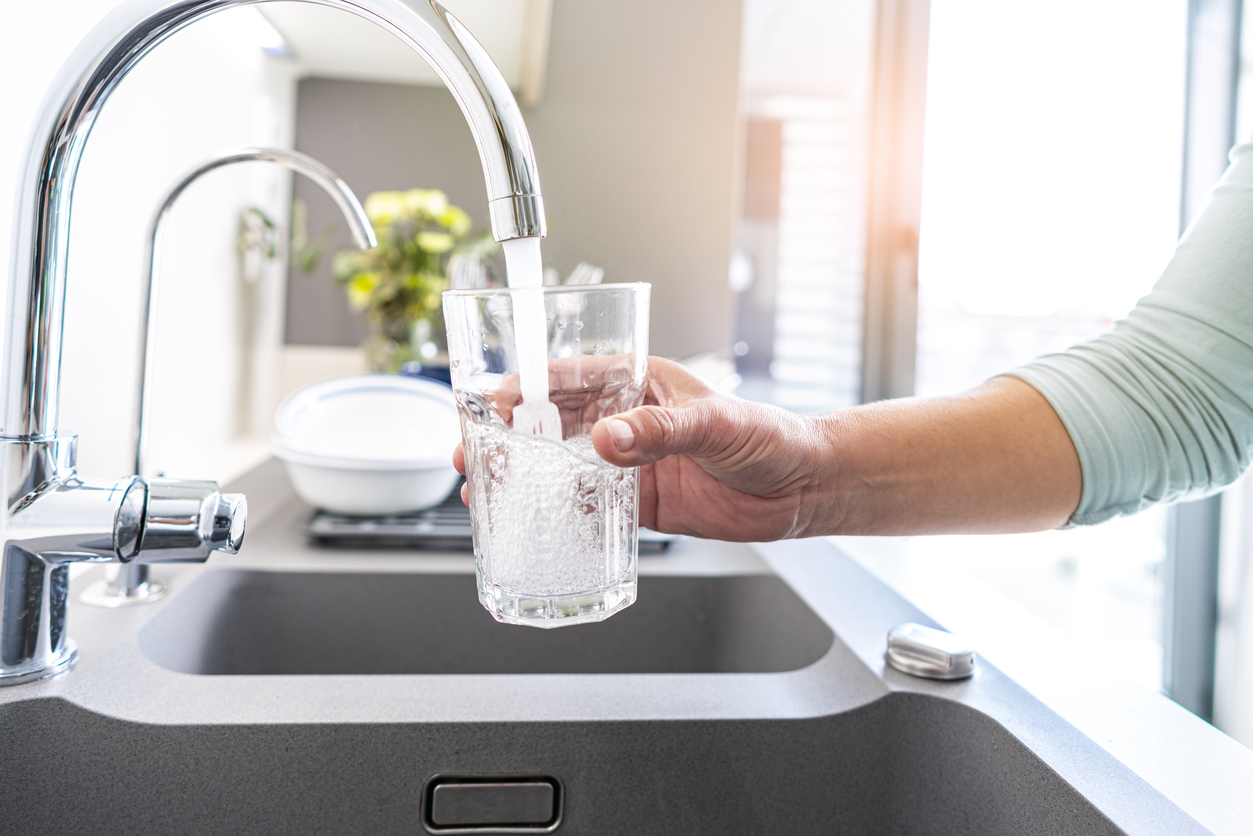
One of Hyman's simplest tips starts as soon as you wake up. When he gets out of bed, he drinks about 32 ounces of water with electrolytes, then a cup of coffee, he told GQ.
According to Healthline, electrolytes—including sodium, chloride, potassium, magnesium, and calcium—help control fluid balance, regulate blood pressure, aid muscle contraction (including the heart), and maintain blood pH. You can buy a packaged sports drink, add a powder to your tap water, or make your own recipe at home.
2
And drink green tea.
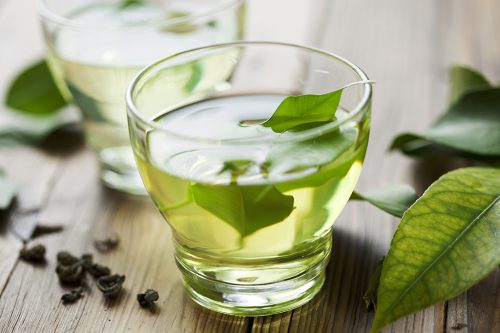
Throughout the day, Hyman also drinks green tea. In a TikTok video, he said, "It contains all these phytochemicals, catechins, which have been shown to activate longevity switches and pathways in our body that keep us young and keep us healthy."
In fact, a 2020 study published in the International Journal of Molecular Sciences reported that "Notably, green tea catechins are widely described to be efficient in the prevention of lung cancer, breast cancer, esophageal cancer, stomach cancer, liver cancer and prostate cancer."
A separate 2010 review of the literature on green tea found that regular consumption could reduce the occurrence of high-fat diet-induced obesity and type II diabetes, as well as the risk of coronary artery disease.
RELATED: People Who Live to 100 Have These 3 Things in Common, New Research Shows.
3
Try his "healthy aging shake."

Even if you can't overhaul your entire diet, there are healthy things you can add to it. Hyman suggests this shake that he drinks for breakfast after exercise. It includes 40 to 50 grams of goat whey (Hyman uses Mount Capra or Naked Goat) and 5 grams of creatine for muscle building, he told GQ.
"I also add a whole cocktail of other stuff: something called Mitopure, which is a compound that's called a postbiotic…it's urolithin A, which induces mitophagy, increases muscle synthesis, increases fitness levels, helps cleaning up old cells, reduces inflammation—just has a lot of benefits," he said. "I also put probiotics [in my shake], I put in adaptogenic mushrooms, some frozen berries, maybe some macadamia milk, and whizz it up."
The doctor says the drink typically gets him through to lunchtime.
4
Use resistance bands.
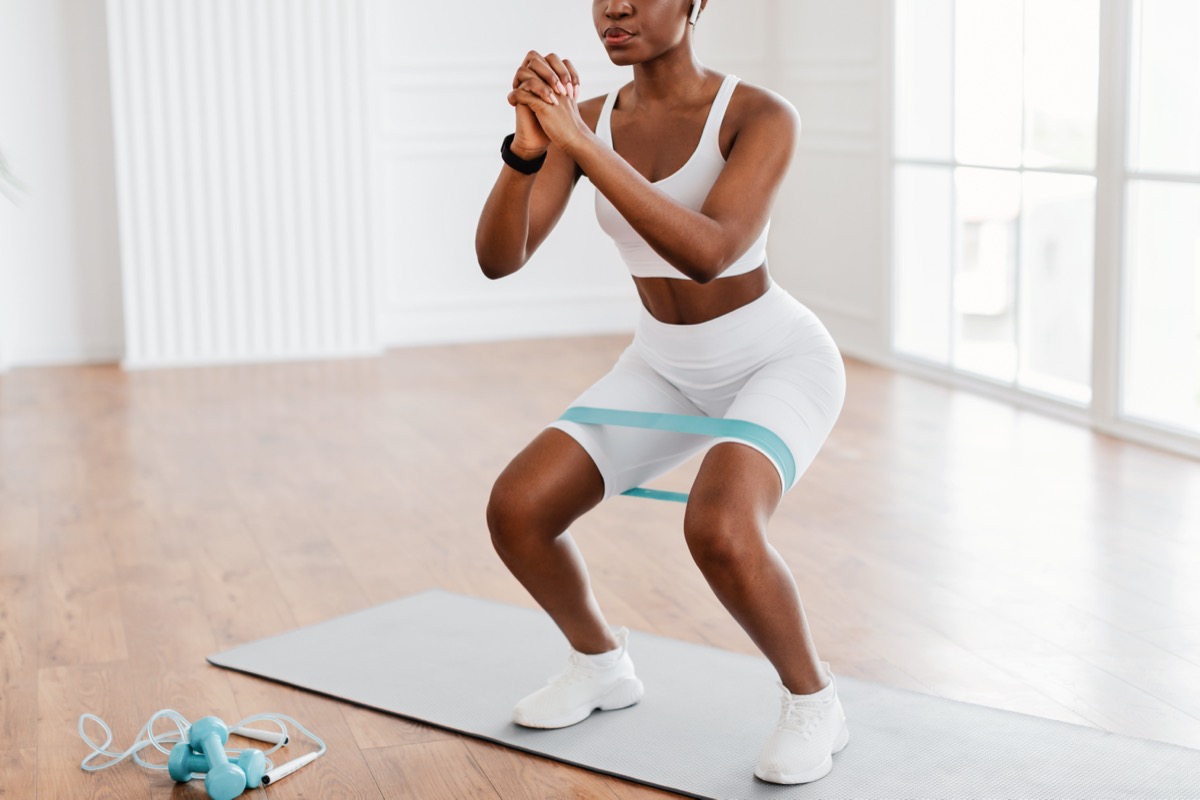
Hyman says that there are four elements of fitness: cardiovascular fitness, strength, flexibility, and stability. His favorite form of exercise, which uses resistance bands, covers three of them.
"I use the TB12 band, Tom Brady's brand, which has a whole routine to get in stability, strength, and cardio-work," he told GQ. "It's a really intense hour workout."
He said that after starting this strength-training routine in his late 50s, his body completely changed and looks better than it did when he was 40. "I wish I had been in the gym more or had done strength training more [when I was younger]," he said. "Muscle is basically the currency of longevity."
RELATED: 83-Year-Old Triathlete Shares His Best Diet Tips to Stay Young.
5
Eat lots of good fats.
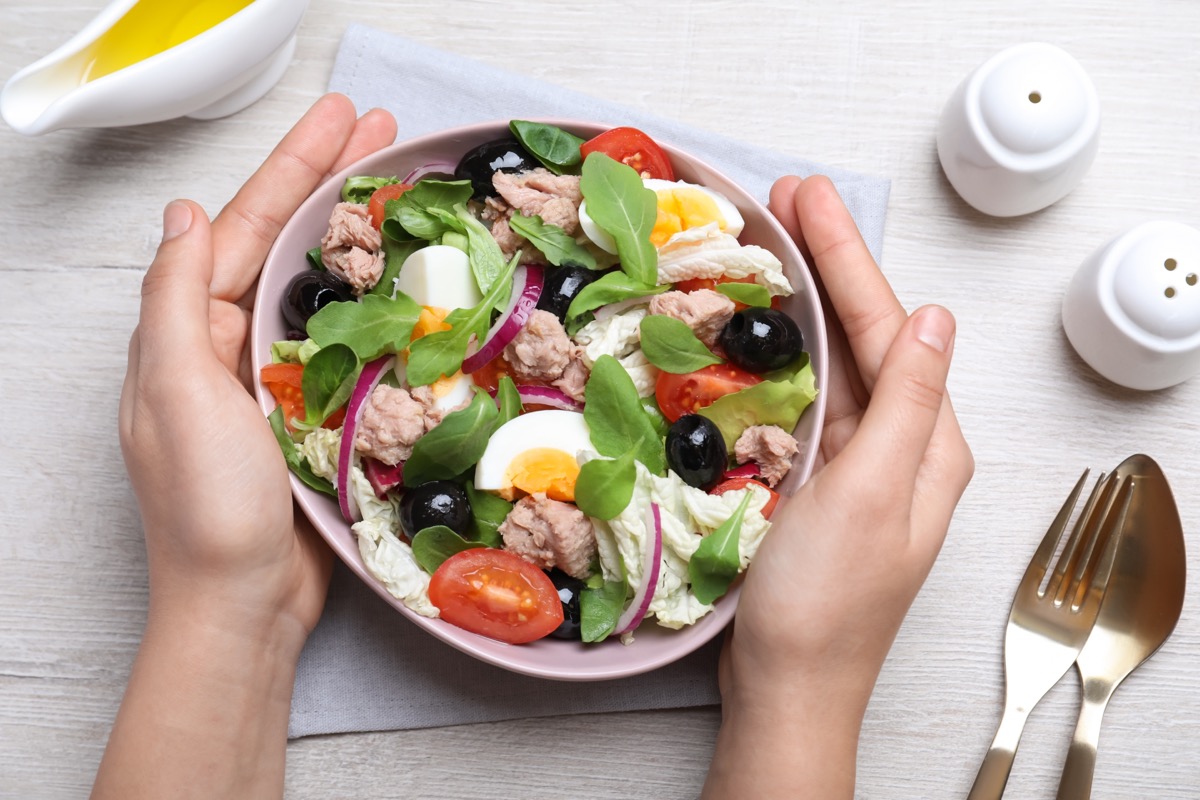
In general, Hyman follows a pegan diet, which is a plant-rich, not plant-based, diet. "It's a lot of colorful, phytochemically rich vegetables; nuts and seeds; and protein," he explained to GQ. He also eats low glycemic, which means low starch and sugar.
A key component of his diet is downing lots of good fats. For example, Hyman describes his typical lunch. "[It] could be a big salad with avocado and arugula. I put in toasted pumpkin seeds or pine nuts. I'll throw in a can of wild salmon, or I'll have a can of mackerel or a couple of sardines on the side, tomatoes, olives, and olive oil," he told GQ. "I call it a 'fat salad,' because it's lots of good fats."
According to UCLA Health, healthy fats can improve blood cholesterol levels, help with blood sugar control, and reduce inflammation.
They also taste delicious, and the more delicious your diet, the more likely you are to stick to it!
6
Also eat lots of cruciferous vegetables.
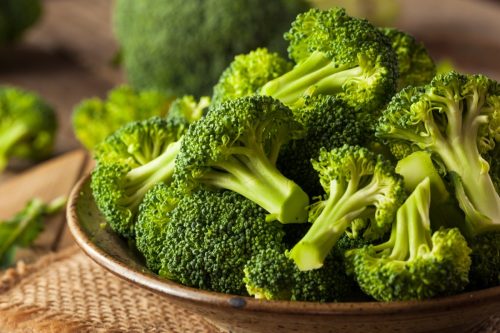
Broccoli, kale, collard greens, brussels sprouts, cabbage—these are all what's known as cruciferous vegetables, and Hyman recommends eating one or two cups of them a day.
As he explains in his TikTok video, they contain "compounds that activate these cellular detoxification pathways that optimize your mineral status, like magnesium… lots of folate, which is important for this key process called methylation, which affects your biological age."
Indeed, the Cleveland Clinic notes that studies have shown that a diet rich in these vegetables can reduce the likelihood of certain cancers, specifically, breast, pancreatic, bladder, lung, prostate, and colon cancer.
RELATED: 91-Year-Old Fitness Star Shares Her Best Workout Tips to Stay Young.
7
Consider exercise a "drug."
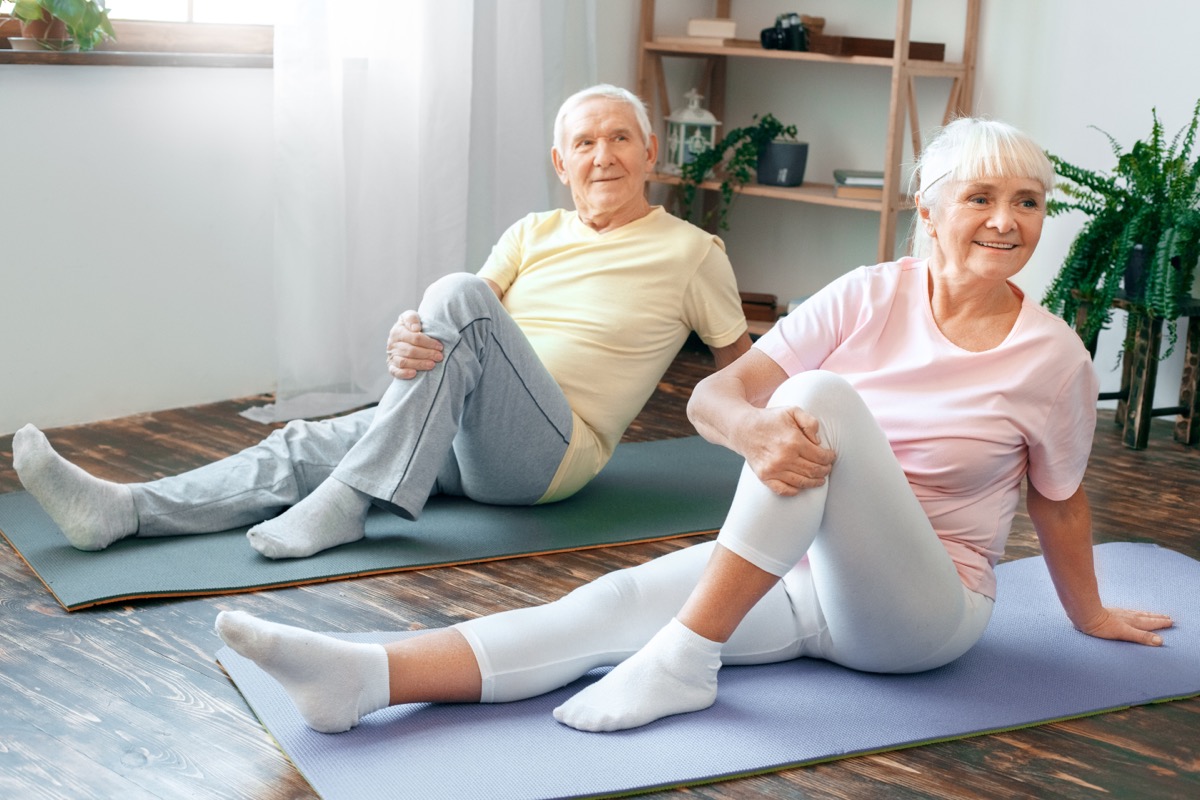
Hyman reframes exercise in a way that could inspire you to get to the gym or onto your yoga mat a little more frequently.
"I think if exercise were a drug, it would be the most powerful drug ever invented on the planet," he told GQ. "It has the ability to regulate almost every physiological function for the better and to avert many of the chronic diseases that we have, from heart disease to diabetes, cancer, and dementia."
He added that it's critical for longevity, too. "Essentially, there are these longevity switches [in the body], and exercise is the way to turn a lot of them," he said. "It's not the only way—diet, supplements, or phytochemicals can manage it, sometimes even medication—but I think exercise is essential."
He says that the older we get, the more important it is—so you may want to establish the habit early.
Best Life offers the most up-to-date information from top experts, new research, and health agencies, but our content is not meant to be a substitute for professional guidance. When it comes to the medication you're taking or any other health questions you have, always consult your healthcare provider directly.
- Source: Aging, Natural Death, and the Compression of Morbidity
- Source: International Journal of Molecular Sciences: Beneficial Properties of Green Tea Catechins
- Source: Beneficial effects of green tea: A literature review
- Source: Cleveland Clinic: What Are Cruciferous Vegetables — and Why Are They So Good for You?

